The weather in Wallis for the first two weeks had not been “flash”. Numerous troughs bringing cloudy conditions, frequent squalls, heavy downpours and gusty high winds had battered the island. With all the rain, it was easy to keep the water tanks full, do several loads of laundry and keep the decks clean. Our main exercise was opening and closing hatches, to try to cool the boat down between downpours.
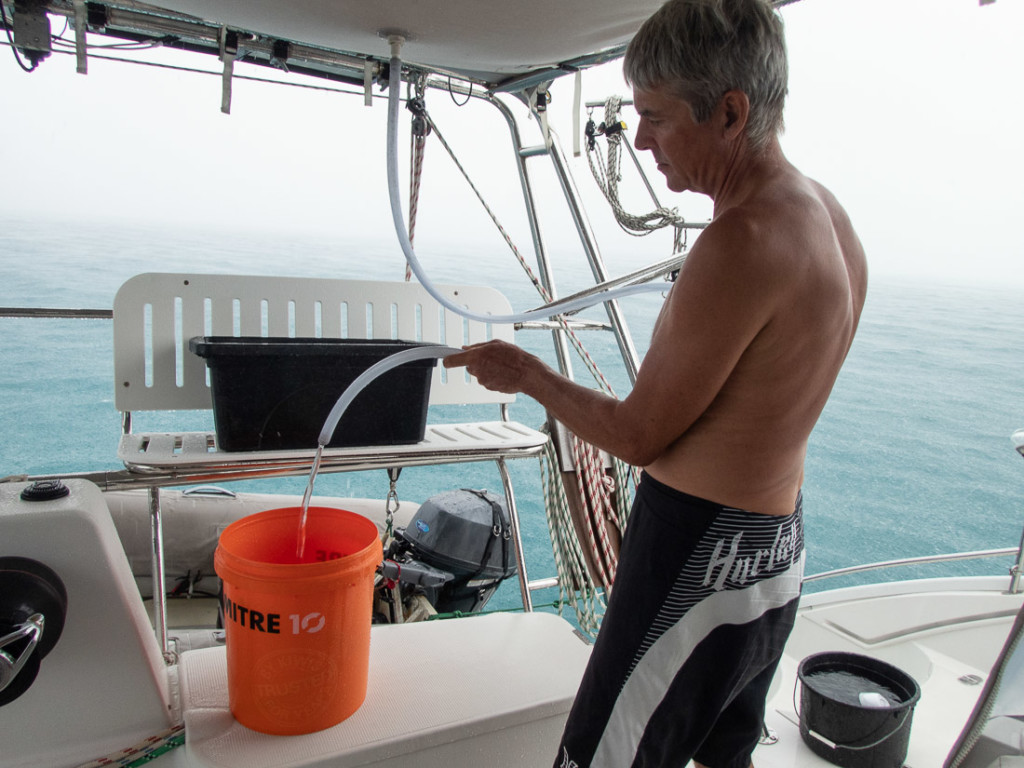
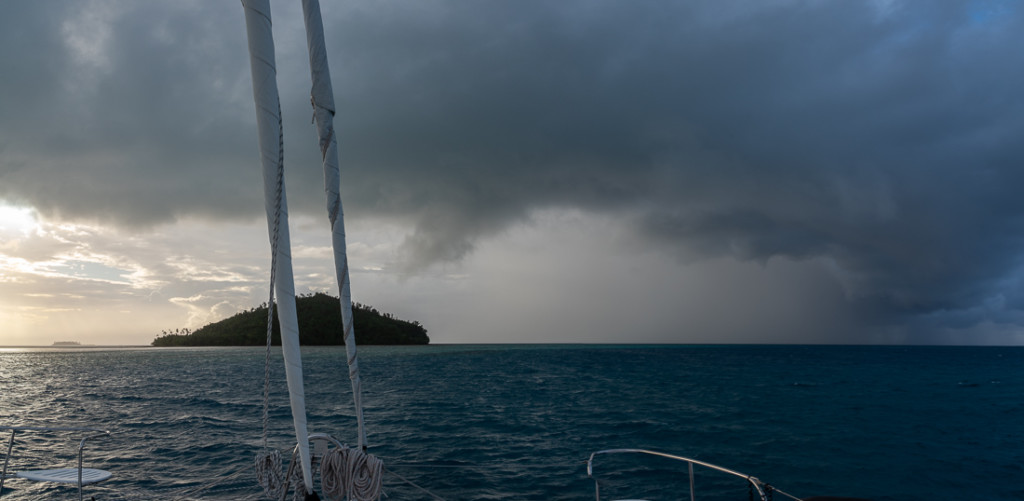
One evening near the end of July, the skies cleared and we were on the trampoline, gazing at the stars. The trade winds were supposed to pick up and we hoped to get kiting soon. After all, kiting had been a primary reason for coming to Wallis. Monty was even whistling. What a difference in mood a “kiting forecast” can have on the skipper!
We had scouted around Wallis to find a good kiting location near an anchorage. If we were comfortable launching from our yacht, it would make life much easier. Maybe one day we will have that figured out.
Ben, the local kite instructor, told us to try anchoring in Baie de Gahi. He launched and kited from there on occasion, but it was in a wind shadow during our stay.
The locals regularly launched from a kite spot along the shore a mile south of the port and about three miles north of Gahi. It is a good option for land-based kiters. It worked at mid to higher tide but not at low tide as the mudflats dried out a long way. We attempted to dinghy there from Gahi one afternoon, but it was rough and just too far. If we anchored closer, off the port, (which was an uncomfortable anchorage) the launch site was a mile walk from the pier. Not much fun lugging kite gear that far in the heat.
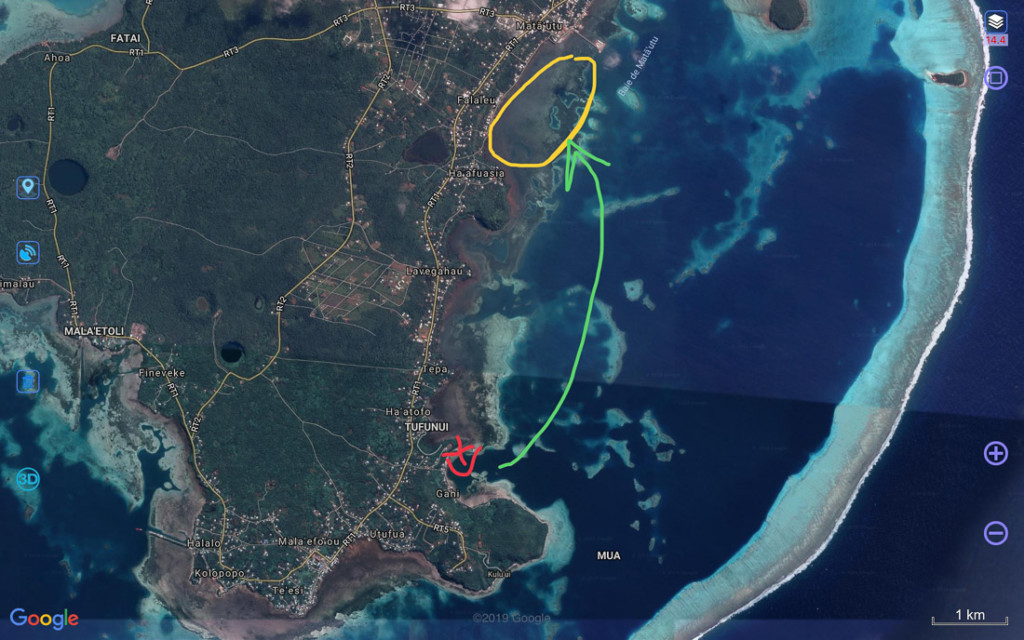
We moved Whistler back to the anchorage off Fugalei Island, east of Mata-Utu.
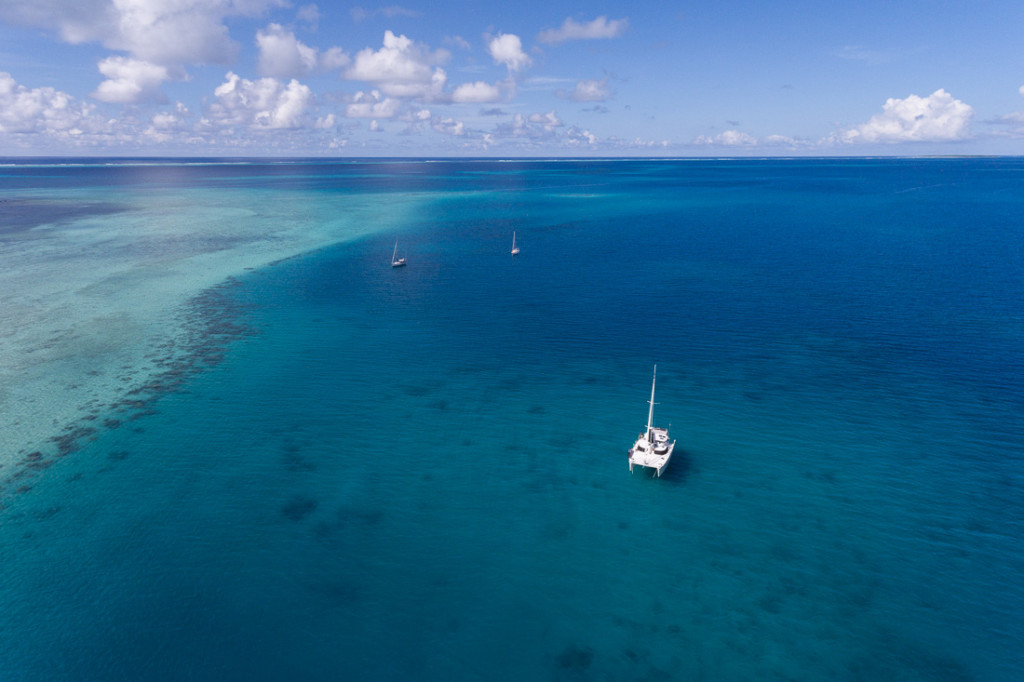
Though it may look ideallic, it is not. The sand is not very deep so it is difficult to get a good anchor set. Also, numerous coral heads dot the bottom. When the winds picked up, our anchor dragged about 10m. Later, in light shifty winds, the anchor chain caught around a small coral head. We pulled up some chain to free it and it stayed clear thereafter. The islets gave us some protection from the winds, but at high tide, a chop made it over the reefs to the southeast. It was rough even on our catamaran, but it had to do.
From there, Monty tried kiting from the nearby sandpit off the islet of Tekaviki. The sand spit was accessible for rigging at low to mid-tide but disappeared at high tide.
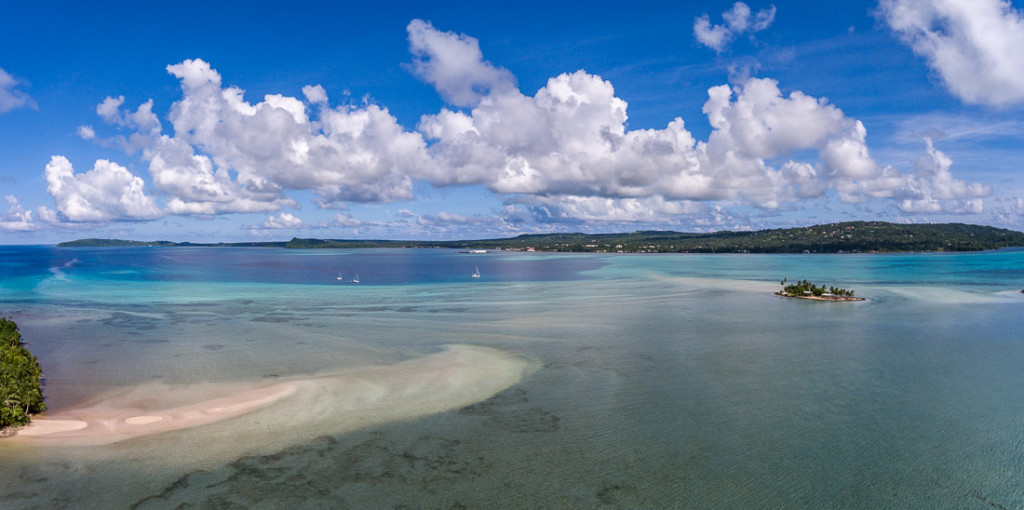

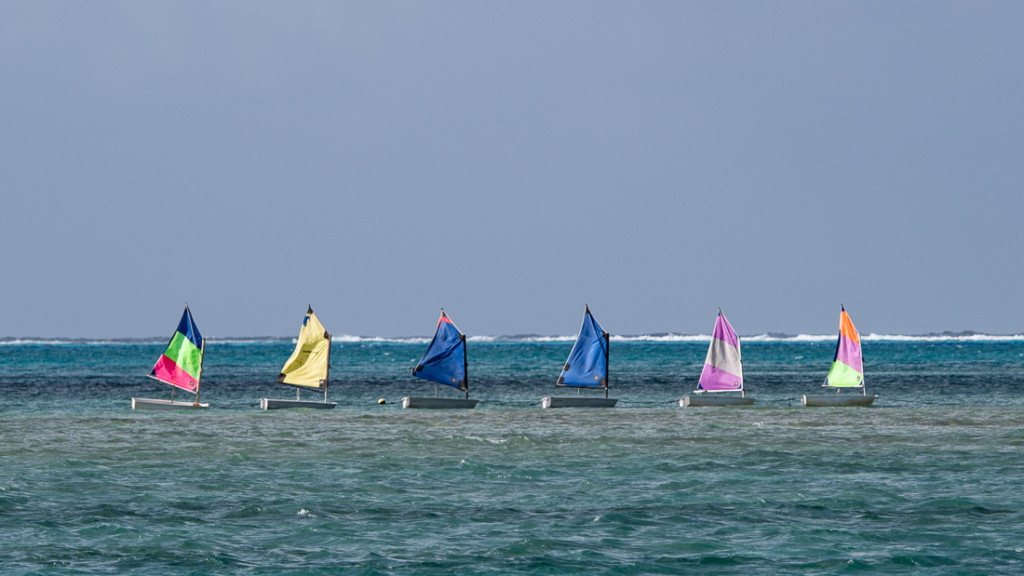
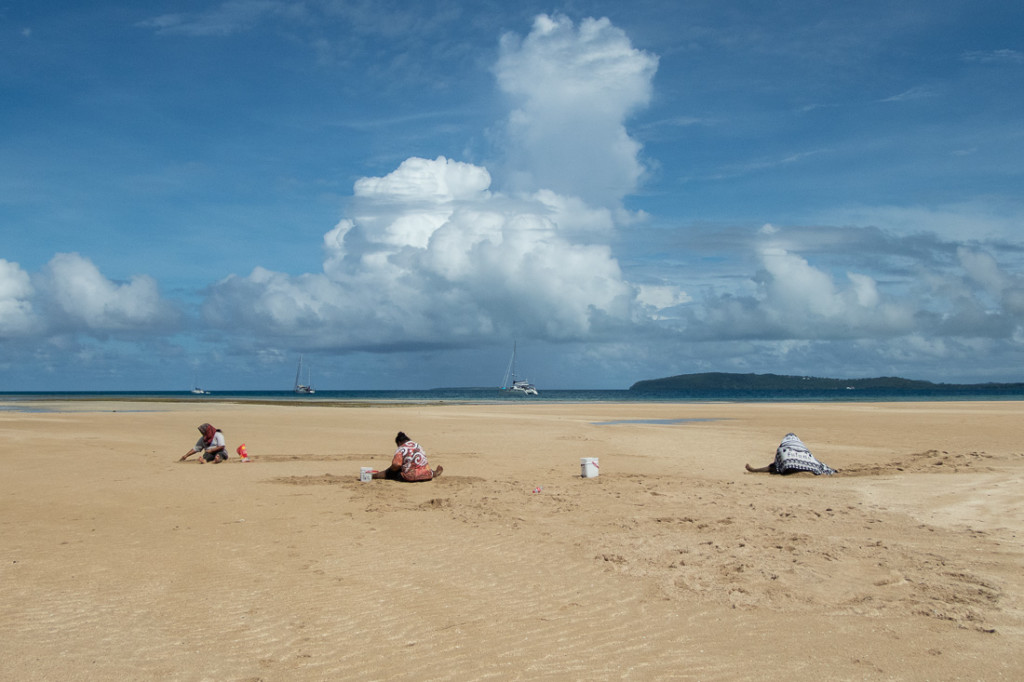
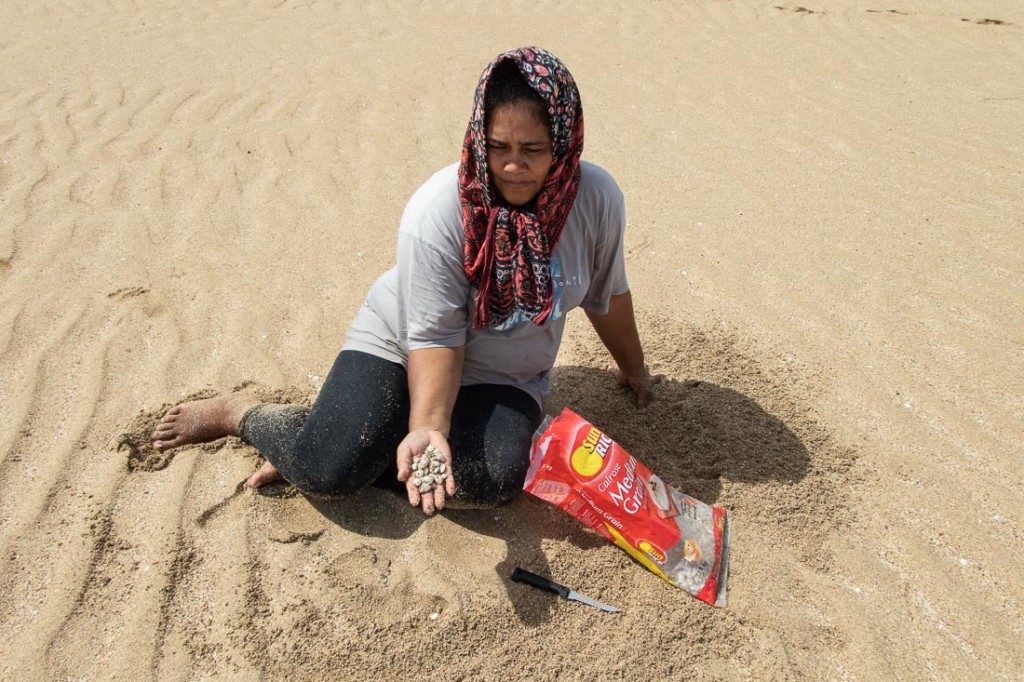
The woman told me they use the shells in the colliers (garlands) for ceremonial dress. You may have seen them in a photo in our previous blog.
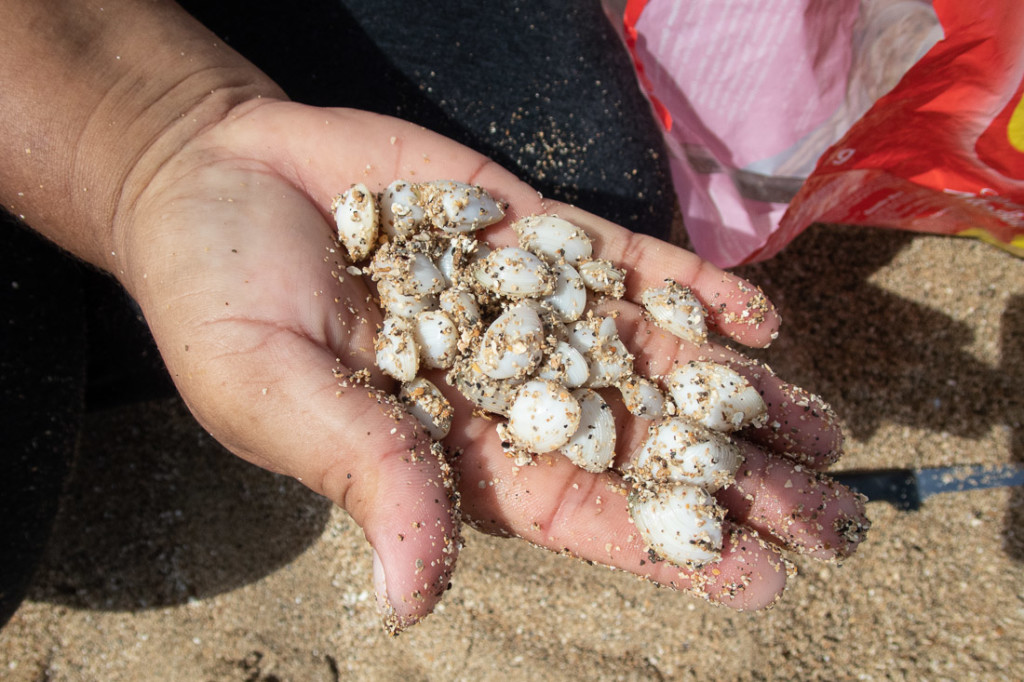
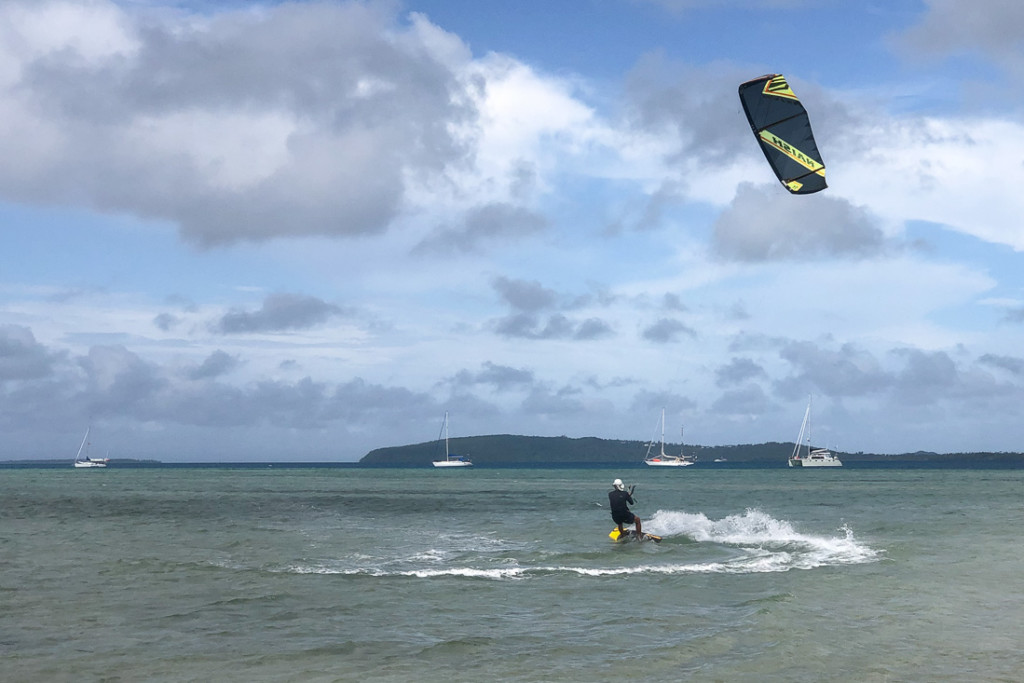
This area was often gusty or in a wind shadow. There had to be a better kite spot for us.
A few years ago in New Zealand, we had met a couple on a catamaran called Tabbycat who had learned to kite in Wallis. Colin and Susan had raved about the kiting and the consistent 20-25 knot trade winds for the two months they spent there. We emailed them to asked where they anchored and kited. They kindly responded that they had anchored north of Luaniva. We surveyed it in our dinghy but decided getting to the anchorage was a tad shallow for Whistler. Tabbycat only draws a metre and Whistler 1.4m. Whistler would be trapped, only able to navigate out at high tide. Whistler would remain anchored where she was, off Fugalei.
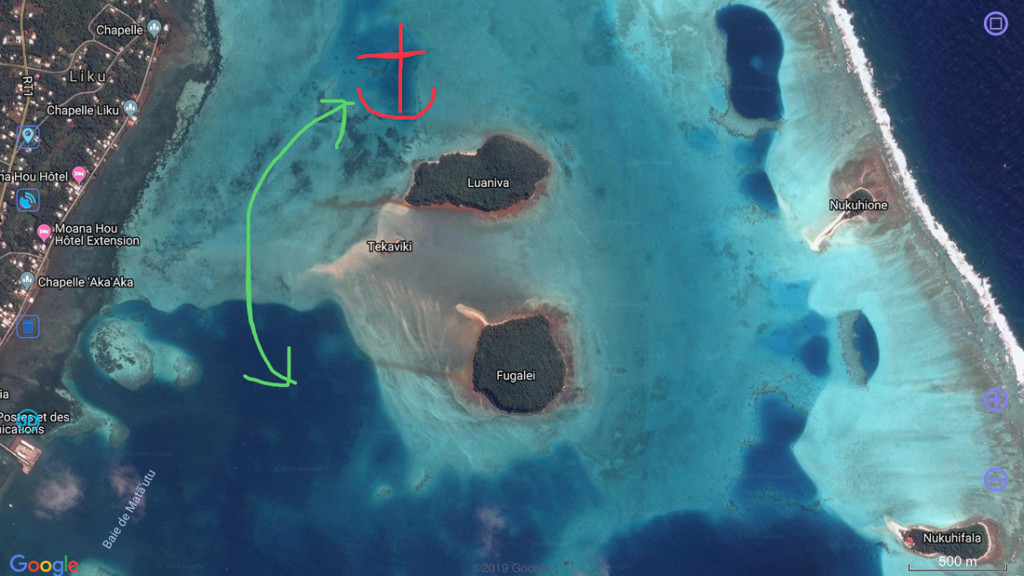
One kite spot they used was on the mainland, west of their anchorage. Recently, a restaurant had been built on the property so it was no longer accessible for rigging and launching.
They also kited from the islet on the eastern edge of the reef called Nukuhione. We had checked it out while snorkelling at Devil’s Hole and thought it would be good but it was a long way by dinghy from the anchorage. It looked like you could go straight there between Luaniva and Fugalei, but that route was too shallow most of the time. We had to dinghy around the southern side of Fugalei. We would give it a try.
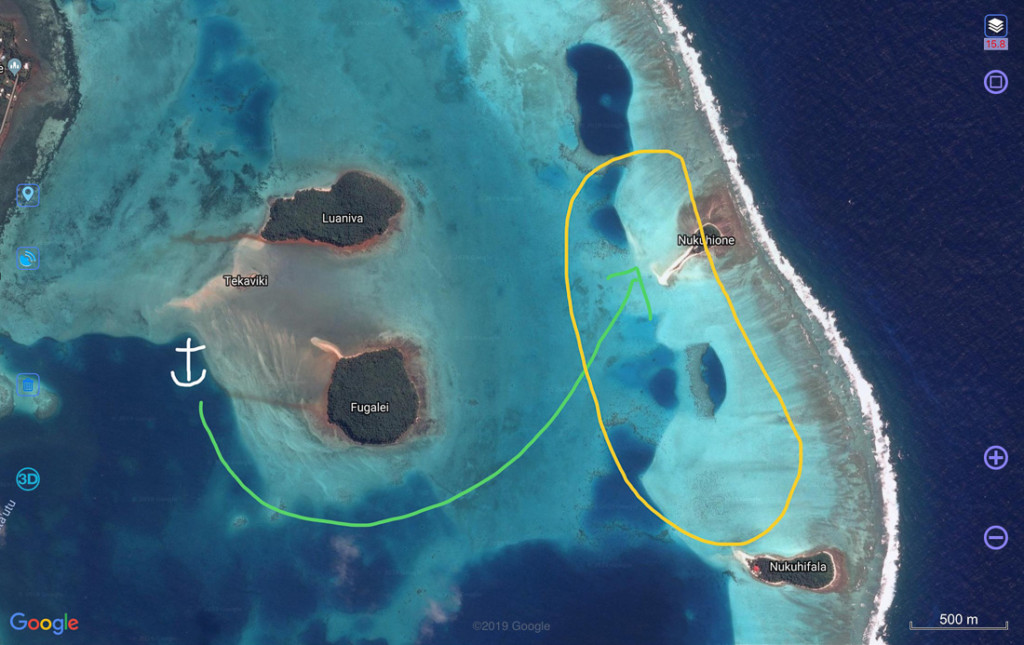
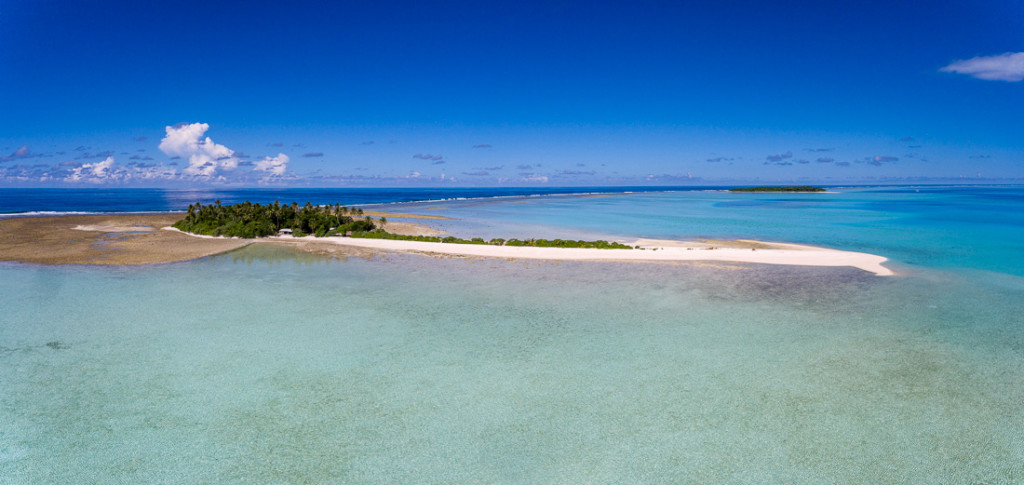
Nukuhione, like each islet belongs to a local family who owns land on Uvea roughly closest to the islet. The islet was well-maintained and had shelters for the locals to take cover from showers and the sun. Very little garbage or glass was noticeable on the islets, a nice change from Tonga and Fiji. A shrine for prayer was central to the gathering area. No one lives on the islet but small groups of locals arrived in skiffs almost daily for picnicking, sun-bathing and swimming. They rarely interacted with us other than with a smile or a “Bonjour”.
A few young French cruisers tried to camp out on the islet one night. They told us later they had to leave in the middle of the night as they were being eaten alive by mosquitos. Fortunately, we never had any problem with bugs on board but we were anchored a fair distance from any islands and have fly screens.
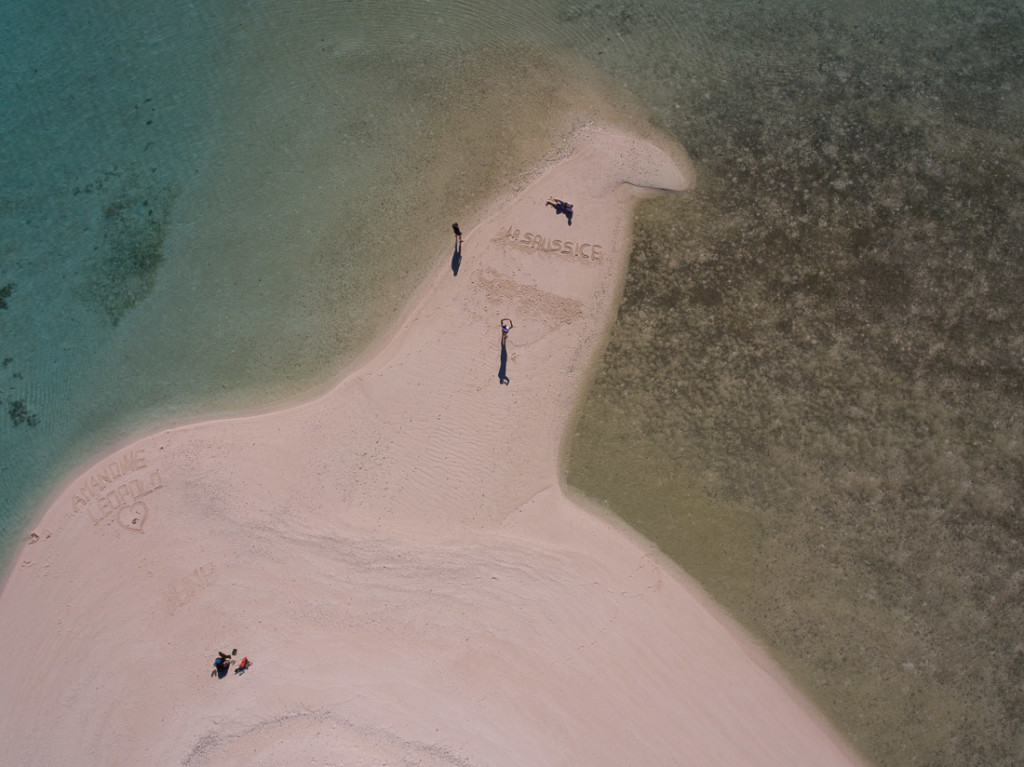
When it was calm, Nukuhione was a 10 to 12 minute dinghy ride. When the wind was up, it was a different story. It took 20 minutes with metre-high chop bashing our little dinghy head on. We got soaked! Fortunately the water is very warm. I let out the occasional yelp when a wave smacked us and was exhausted from hanging on when we arrived at the islet! Who needs to kite for exercise? By going at low tide, the chop was not as brutal, and could get there in about 18 minutes.
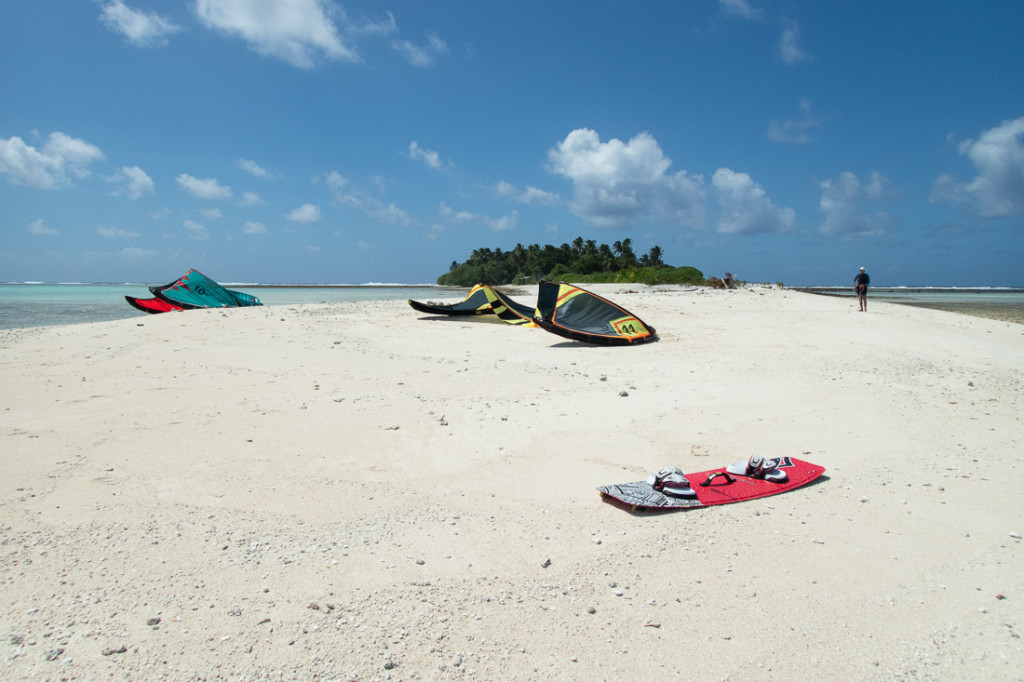
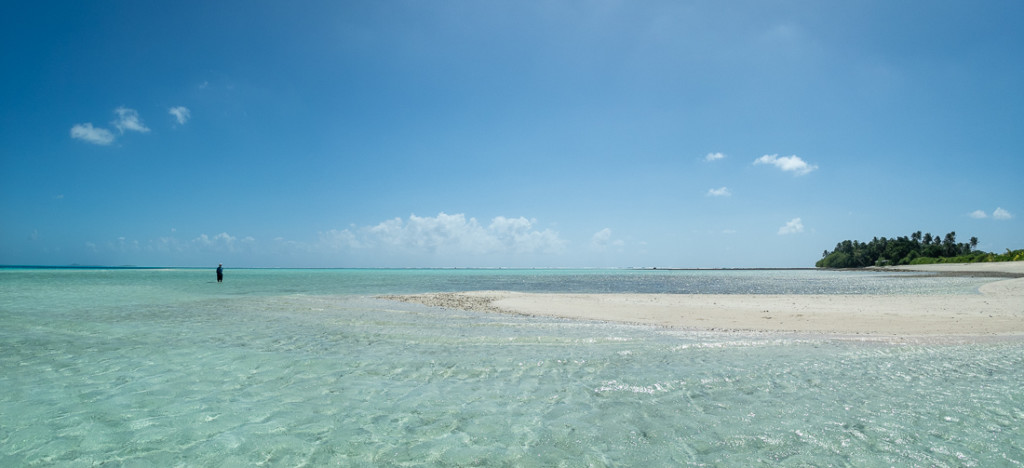
Rigging and launching from the sand spit was easy in any tide. No other kiters were around. The kiting area was about a kilometre long and half a kilometre wide. We kited both north or south of the islet in flat water and would move around depending on the wind direction and height of the tide. Much of the kiting area was knee to waist-deep with little worry of stepping on coral.
Monty finished his day with downwinders several times. He took different routes depending on the winds and tide. I followed in the dink and retrieved his kite at Tekaviki.
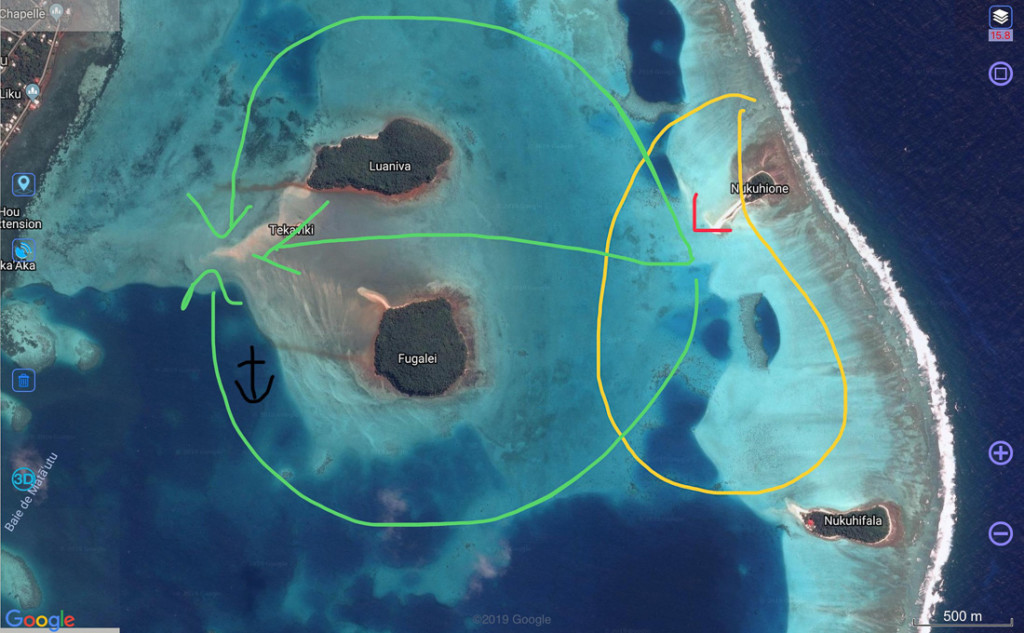
For the photos and video clips, see the link at the end of the blog.
As this is our last blog on Wallis, I am including some of our parting thoughts and impressions. The locals were very welcoming, the anchorages beautiful and the French influence was a pleasant change.
It was indeed difficult to find some provisions like fresh produce at reasonable prices. After we had been there for a month, we got a bit smarter. Croissants and pastries sold out early, like by 630am. Given church service starts at 530am, the locals must shop on their way. Early bird gets the worm or croissants in this case! By preordering at one of the convenience stores the day before, we were not disappointed. We also made sure we got to the Saturday market before 630am as items sold out quickly.
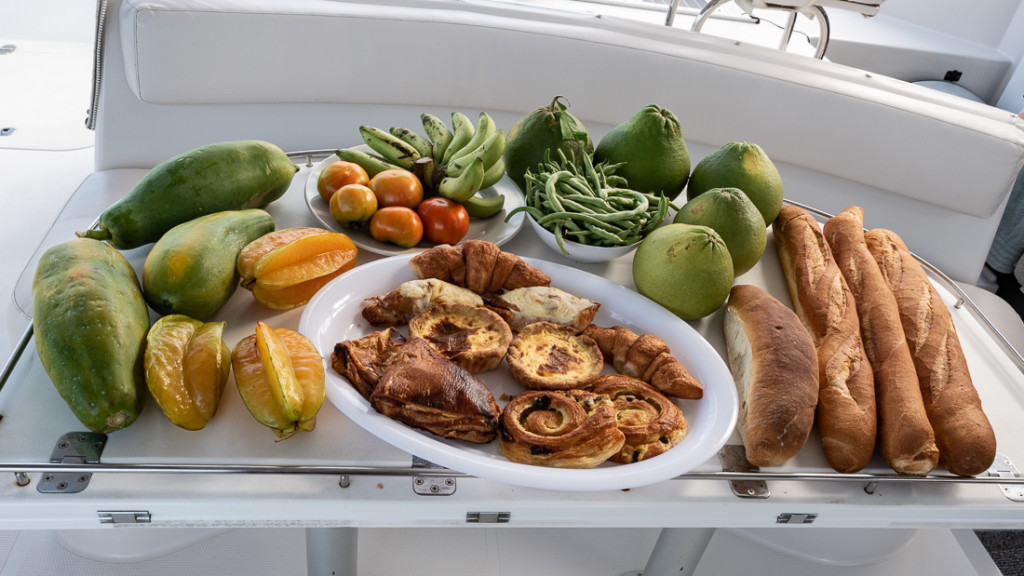
Dinghying from the Fugalei anchorage to the dock could be a rough wet ride, especially at high tide. We learned the best way to travel was in our swimsuits, putting on dry clothes on when we tied up at the dock. We also brought big garbage bags for our provisions so they would not get coated in salt water on the way to the boat. No one wants to have salty wet baguettes!
We hitched rides to and from the SEM supermarche. In many cases, people stopped and asked us if we wanted a ride. The same lady has picked us up a few times! Most were from France, but some local Wallisians have also offered rides. Once we were asked if we wanted to ride in the back of a pickup which is common practice in Wallis. The police are adamant that the driver and passenger in the front seat wear seatbelts but it is okay to ride in the back of an open truck!
There were very few tourists in Wallis so they are curious when they saw strangers walking along the road with bags of groceries or a jerry can. They always asked, in French, where we were from and how long we intended to stay. I would struggle to answer in my rusty French but many were teachers, nurses, doctors or in some government job and knew some English, so we had some pleasant chit-chat. When we told them we were on a boat, most knew our “catamaran” since it was the only yacht anchored for more than a couple weeks. It was uncommon for yachts to stay more than a week or two.
When we informed the clerk in the wine store that we were planning to leave, she insisted on giving us a couple small bottles of ciders as a going away present. She had us try a slice of salami with hazelnuts which was to divine. We bought a package with a few more bottles of French wines. She expressed she was hopeful we would return, and not just because of our business. Genuinely kind people like her really made us want to stay longer.
The numerous islets like Nukuhione and Faioa around the lagoon are worth exploring. We only made it to four. They typically are lined with sandy beaches, with coral reefs and warm tranquil waters for swimming. Each islet had shelters, fire pits for cooking and colourful Catholic shrines. The crosses, like this one on Faioa Island, were robed and adorned with decorative “colliers”.
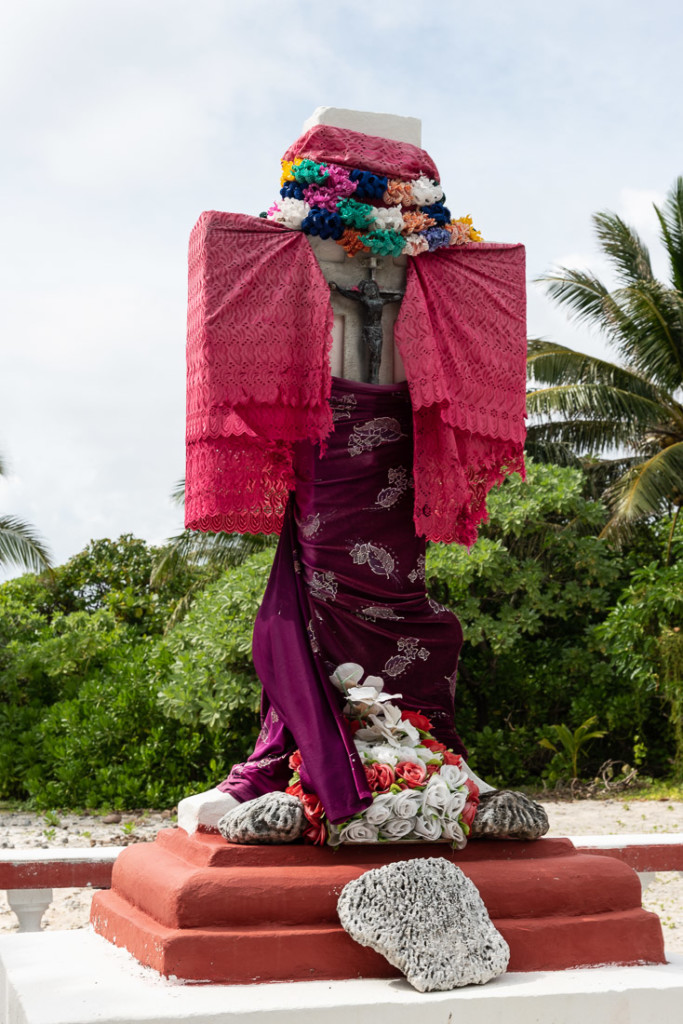
On our walk around Faioa, we passed a large family group setting up for a weekend stay. They asked us if we wanted anything on our way by, how kind!
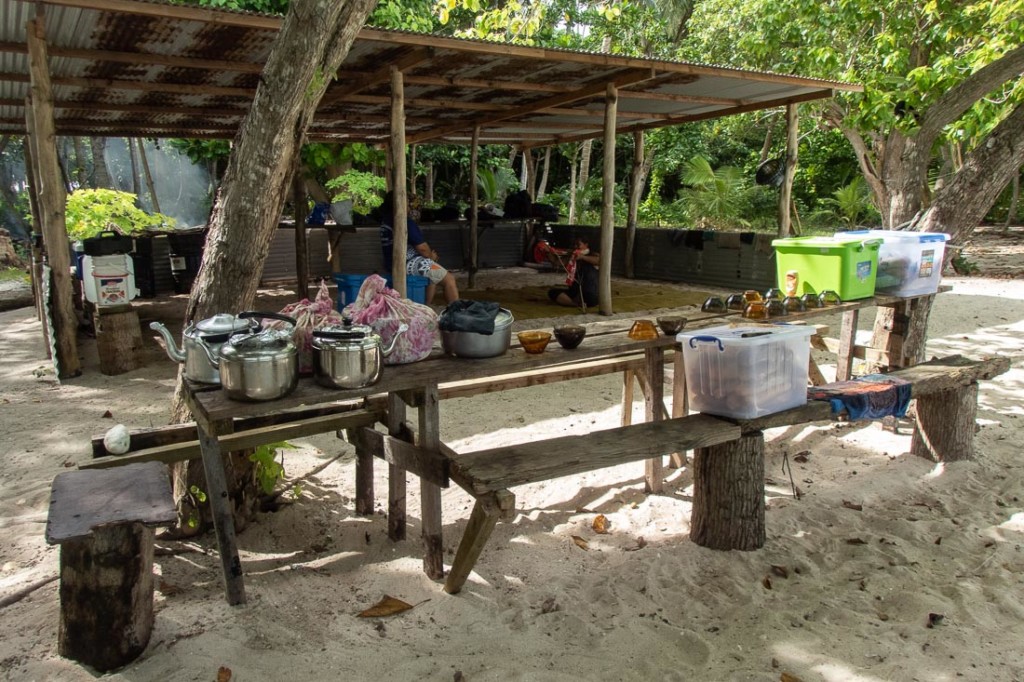
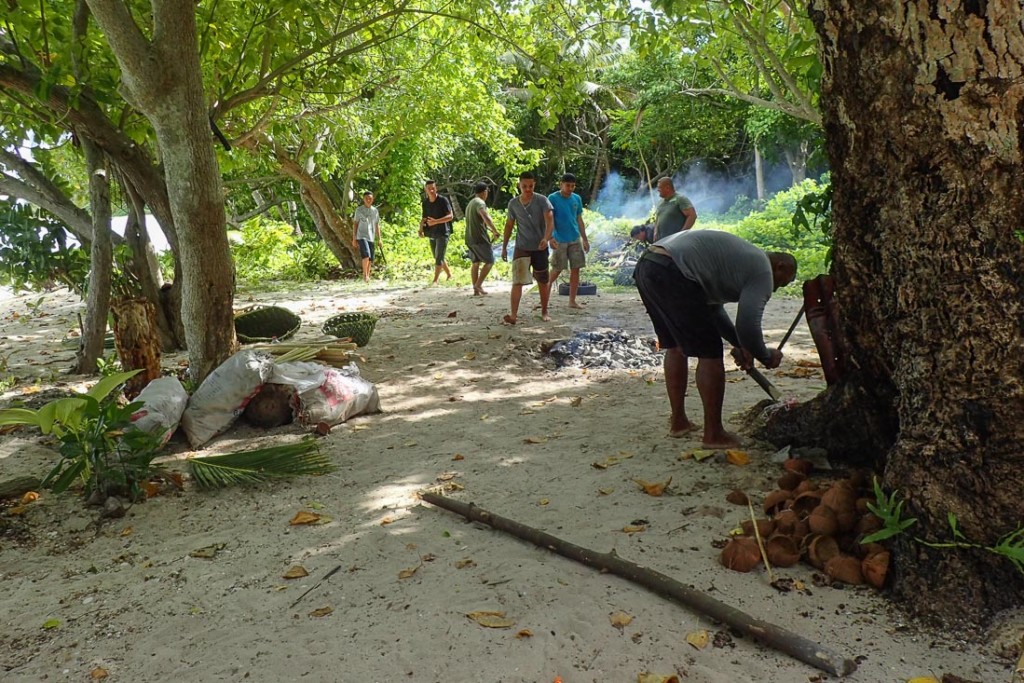
On our way back to the dinghy, we were again asked if we would like to eat something. We said we were fine, but they ran out with a plate of food and a baguette for us. Such generous people!
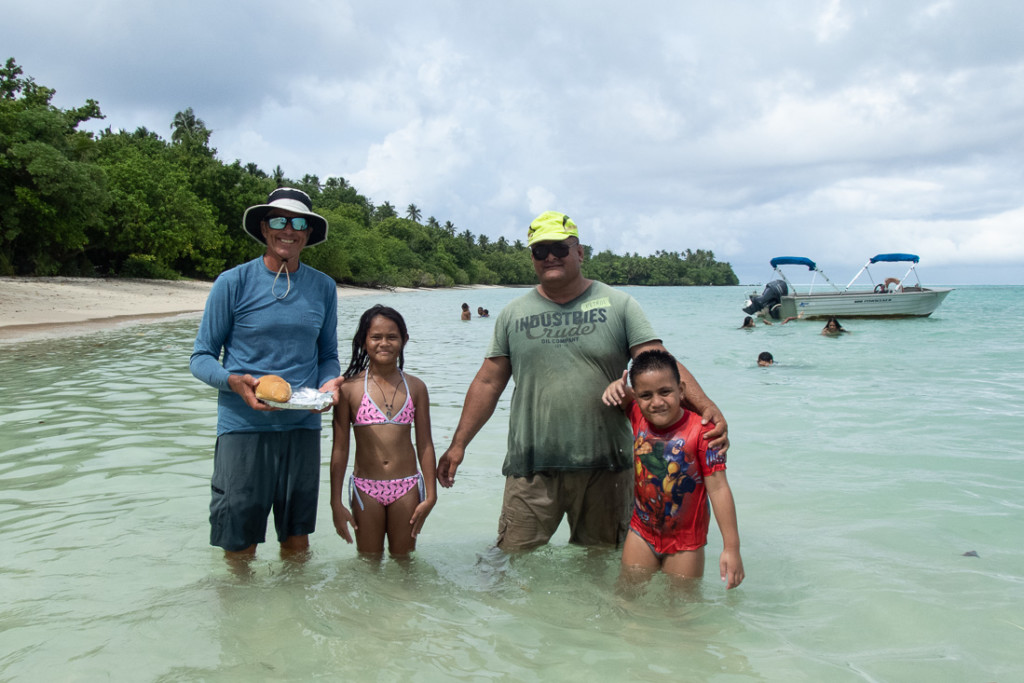
The air and sea are very warm year round. No need for a wetsuit! We experienced about 33 during the daytime and 30 degrees overnight. We saw 40 degrees in our cockpit on a few occasions. We found it hot and hard to sleep at night when it was still.
On a calm day with no squalls on the horizon, which was very rare during our stay, we set up our sunshade. A breeze flowing through the trampoline provided additional relief from the heat. It was so much cooler than in the cockpit which faced the afternoon sun.
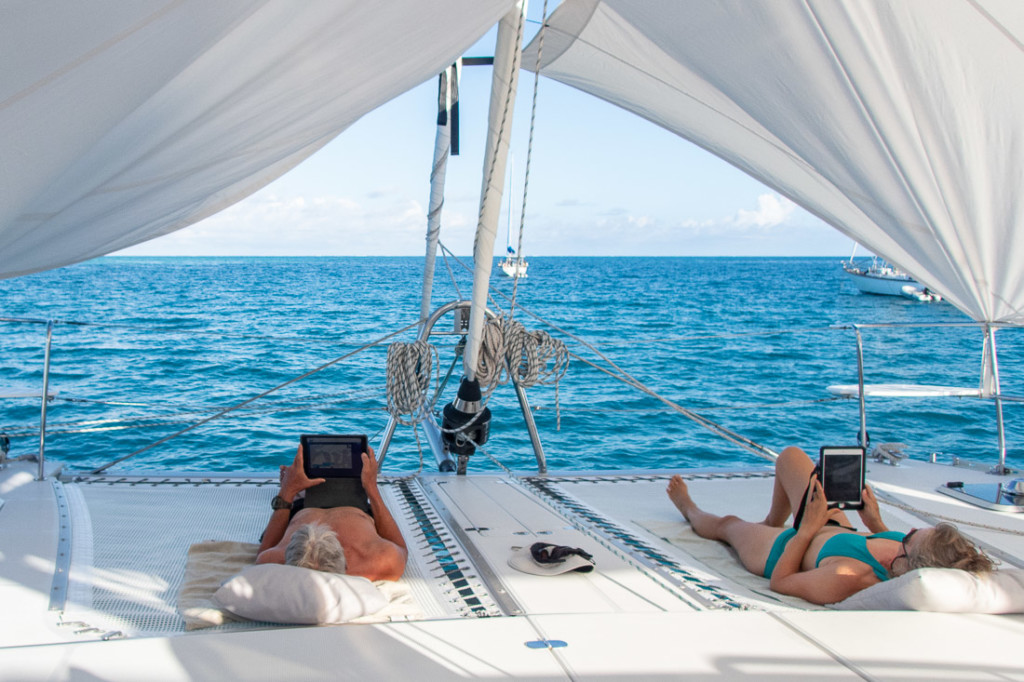
We were told by a government contact that Wallis is considering installing some moorings in a few locations. It would make life so much easier for visiting yachts. We hope they proceed. We asked for a good strong mooring to be installed in a few places, like where Whistler is moored in the photo below,. It is near the kite-boarding area and good snorkelling. Anchoring was not safe as there is too much coral everywhere. The existing mooring was unsuitable for a cruising yacht and its line was chafed. We only used the mooring on a calm afternoon, and remained on board.
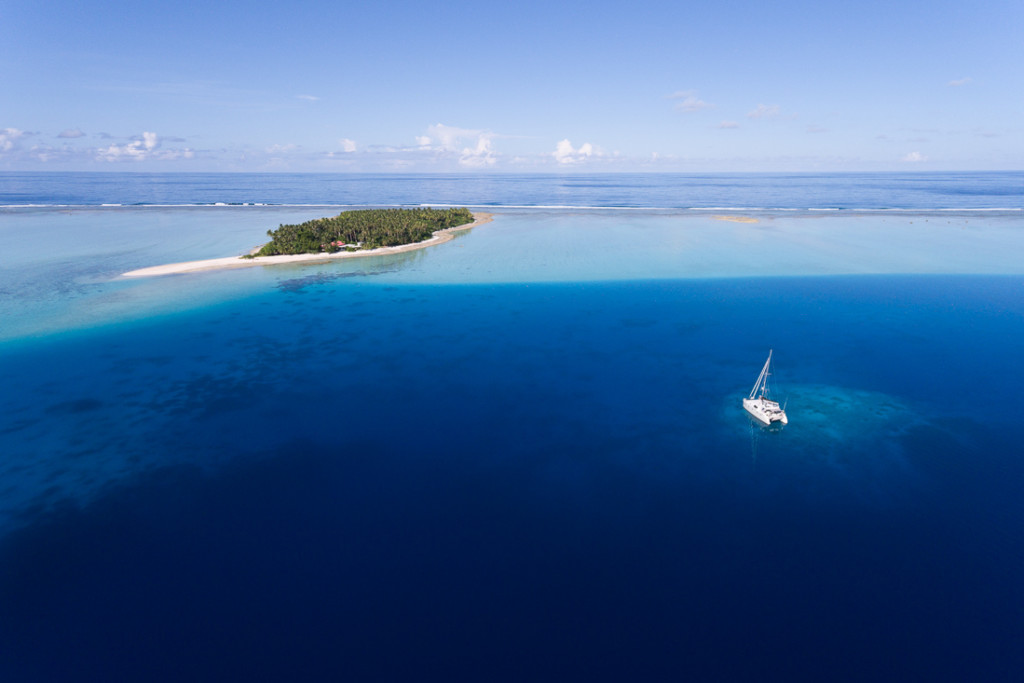
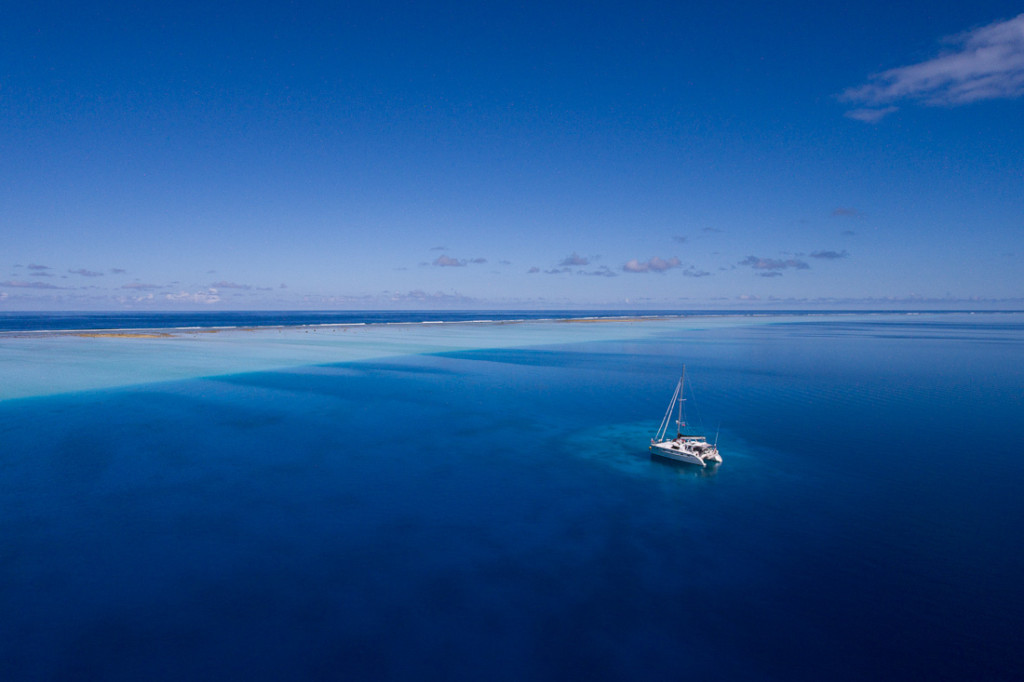
We hope you enjoy this video about our kiting experience in Wallis.
Kiteboarding in Wallis from S/V Whistler on Vimeo.
After two weeks of good kiting conditions, the winds were forecasted to die out. It was time to look for a weather window to Fiji. Unfortunately, the windows often happen at the same time there is good kiting in Wallis! It was hard to leave Wallis for two reasons. The forecasted winds were not cooperating for sailing to Fiji and we had really come to like Wallis. We ended up taking a motoring window which was boring but, thankfully, uneventful.
If anyone is interested in cruising to Wallis or has questions, please feel free to drop us a line.

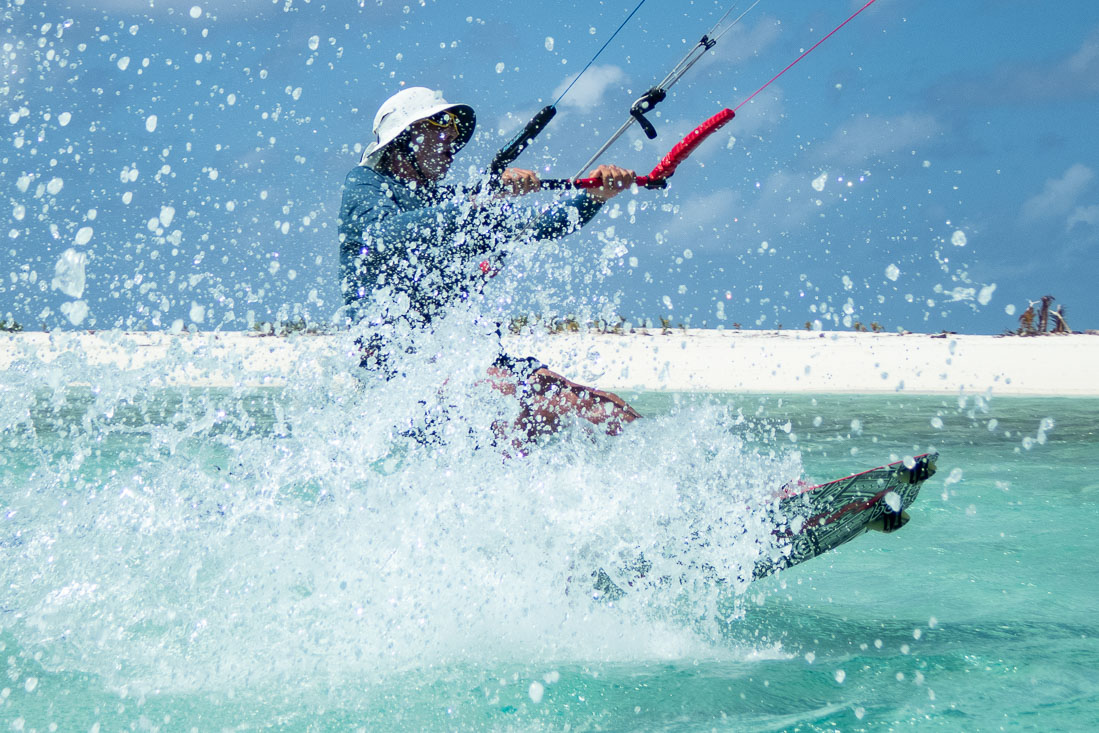
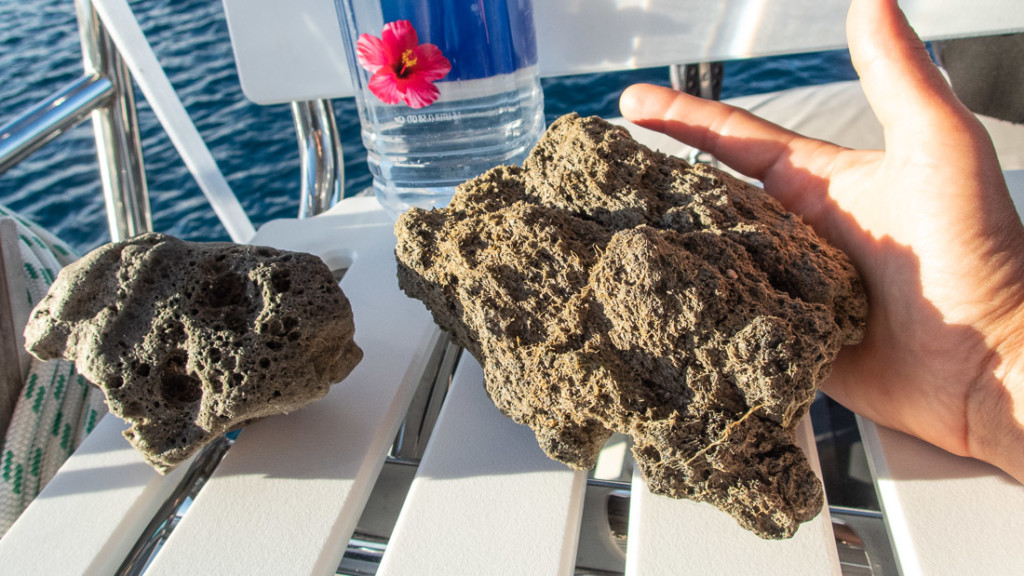
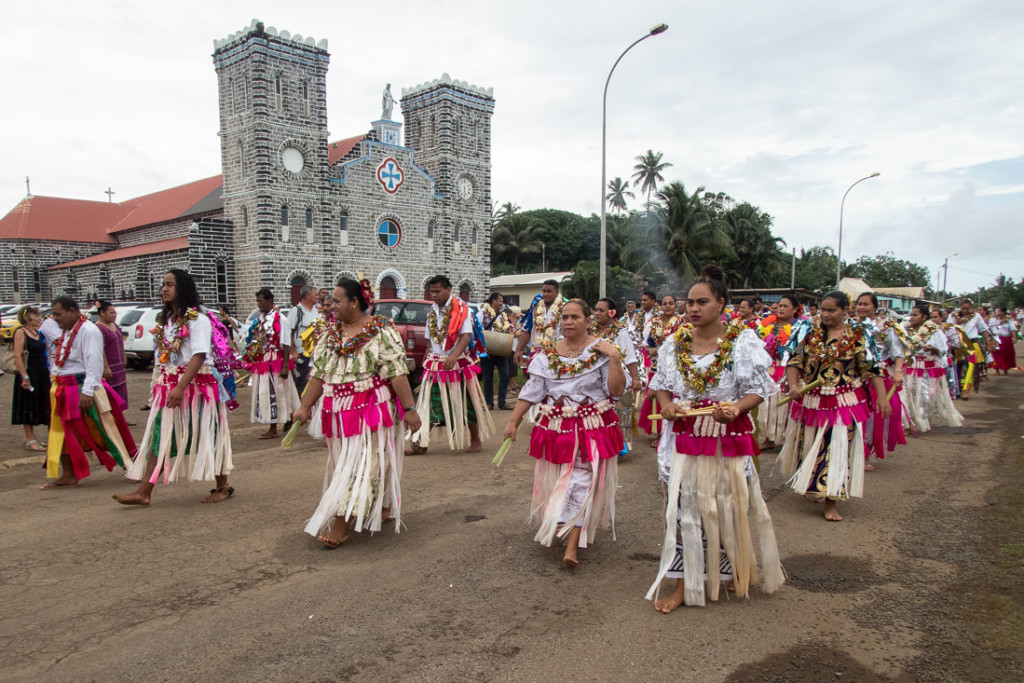
9 comments
Amazingly informative and interesting. As usual. Not just an adventure anymore seems more like
a lifestyle!! Wonderful to follow. Be safe. Cheers
Thanks, Daryl! Enjoy your posts too! You lead an active life! Wallis was fun. Just wish the weather were better.
Hi M & M, Great kiting blog and really loved the video. You guys have come such a long long way from our time together in Tonga a few years ago when I was wandering around a lagoon with your kiting instructor and you were crashing in spectacular fashion!! You are also doing a great job of promoting Wallis & Fortuna as a travel destination and I sure the Wallis Tourist Bureau loves you!! Look forward to further stories. Be safe and happy sailing / kiting!! Brad
Thanks, Brad. We actually met the fellow who has been assigned the task of promoting tourism in Wallis. We are trying to assist him with some ideas. Like putting down moorings and providing a good map with all the sites when we check in. It would be great if someone would do a day tour in English for yachties. We have been waiting for a window to leave Fiji for weeks now. And still not a good one on the horizon. We refuse to sail to a schedule, and face headwinds for several days! Thanks for the well-wishing!
Thanks for having us on board your lovely PDQ in Wallis when we tagged along with John and Amanda Neal. Seeing your wonderful boat changed our minds and we are now shopping for a cruising cat instead of a monohull. Going back to the Mahina was tough!!
That is interesting. You should charter one and see what you think. Good to have some sailing time and feel the different motion. It doesn’t heel but you need to hold on with one hand when you are moving about in rough seas. The larger living space is a huge appeal. We spend 90 to 95% of our time at anchor, but that is us. We have friends with just about every catamaran make, so feel free to let us know if you want to connect or read their blogs. Please keep in touch!
Dear Margy and Monty,
I’d love to make contact with you about some of your beautiful images from Wallis for the new edition of “South Pacific Anchorages” by the Royal Cruising Club Pilotage Foundation in collaboration with Imray. I’ve taken over authorship of this rather outdated title and am trying to breathe new life into it in a new, full colour version. Wallis and Futuna are so little documented that images like yours could really help fellow cruisers.
Please get in touch and I hope you’d consider contributing some images.
Kind regards,
Jess Lloyd-Mostyn
Very interesting article and beautiful pictures of Wallis! Make us want to visit Wallis ……?
Thanks, Elina! Monty wants to go back. Hope we can one day!